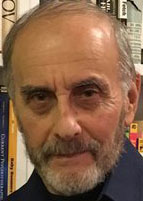The World War II Manhattan Project, powerfully dramatized in the film Oppenheimer, which succeeded in beating Germany and Japan to "the bomb," may have the answer to how to defeat climate change. In only three years from the time the U.S. fully committed to the Manhattan Project (1942-1945)--knowing little about nuclear fission and using crude analog computers--scientists achieved the seemingly impossible. Can they do it again for nuclear fusion? Some say it might take decades to develop the commercial use of nuclear fusion--a technology that could produce unlimited clean energy with virtually no highly radioactive waste.
On March 21, 2024 representatives of 30 nations met in Brussels Belgium to promote the expansion of nuclear fission plants to address climate change. But there is a problem. Although these plants produce clean energy their dangerous radioactive waste can last for millions of years. And the plants are unstable, posing calamitous accident risks. That's why nuclear fission plants around the globe are shutting down. Add to that, fierce opposition from activists and communities that don't want these plants. In contrast, nuclear fusion can produce unlimited clean energy, with the huge advantage that a large-scale nuclear accident is not possible in a fusion reactor, according to the International Atomic Energy Agency (IAEA) and the UK Atomic Energy Authority(UKAAE).
A massive international investment in nuclear fusion, for a program like that of the Manhattan Project, would be an answer to Senator John Kennedy's query: Yes, nuclear fusion uniquely holds the prospect of achieving net zero carbon emissions and maintaining or reducing world temperatures at a safe level. We have wasted too much time on projects doomed to failure--and continue to do so. Let's place our bets on a proven winner--science--and choose life over suicide.
Bernard Starr, PhD, is a psychologist, journalist, and professor emeritus at CUNY. He has written about climate change since 2008.
(Article changed on Apr 04, 2024 at 10:42 AM EDT)
(Note: You can view every article as one long page if you sign up as an Advocate Member, or higher).





